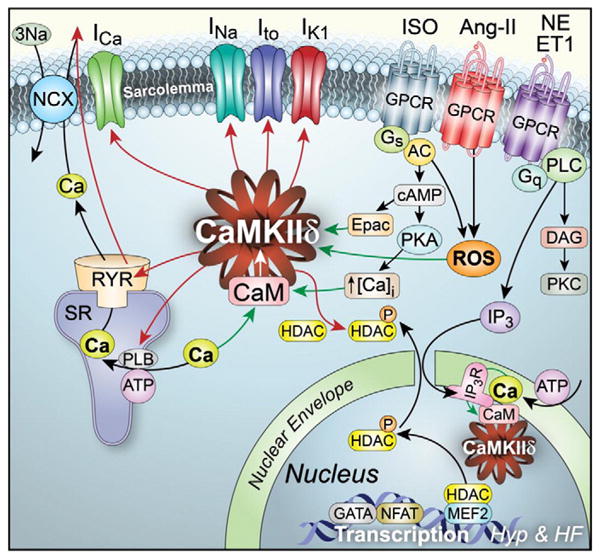Fig. 2.

The relationship of CaMKII to upstream activators and target proteins in cardiomyocytes. CaMKII is present in cardiomyocytes where it is activated by Ca/CaM, ROS and Epac. Activation of β-adrenergic receptors (β-AR) can activate CaMKII by way of adenylyl cyclase (AC) that leads to increased Epac and increased protein kinase A (PKA). Other G-protein coupled receptor (GPCR) agonists (angiotensin II, AngII; norepinephrine, NE and endothelin-1, ET1) can increase cytoplasmic ROS by activating NAPDH oxidase, and increase Ca release from inositol triphosphate receptors (IP3R) in the nuclear envelope that activate nuclear CaMKII to increase prehypertrophic signaling by type II histone deacetylase (HDAC) derepression of myocyte enhancer factor 2 (MEF2). Activated CaMKIIδ (the predominant myocardial isoform) induces stimulatory actions by phosphorylating major Ca homeostatic proteins to increase L-type Ca current (ICa), phospholamban (PLB) to increase cytosolic Ca uptake by the sarcoplasmic reticulum (SR), and ryanodine receptor (RyR) to increase SR Ca release, which activates inward Na current due to the Na/Ca exchanger (NCX). CaMKII catalyzes phosphorylation of voltage-gated ion channels responsible for Na current (INa), transient outward K current (Ito) and inward rectifier K current (IK1).
